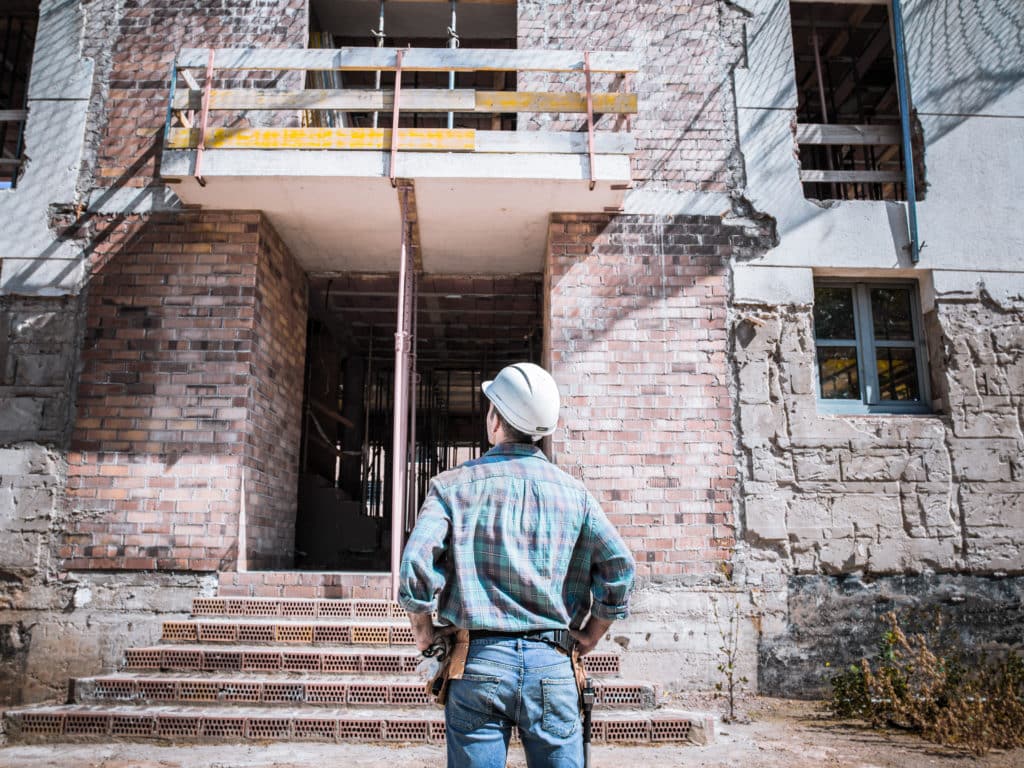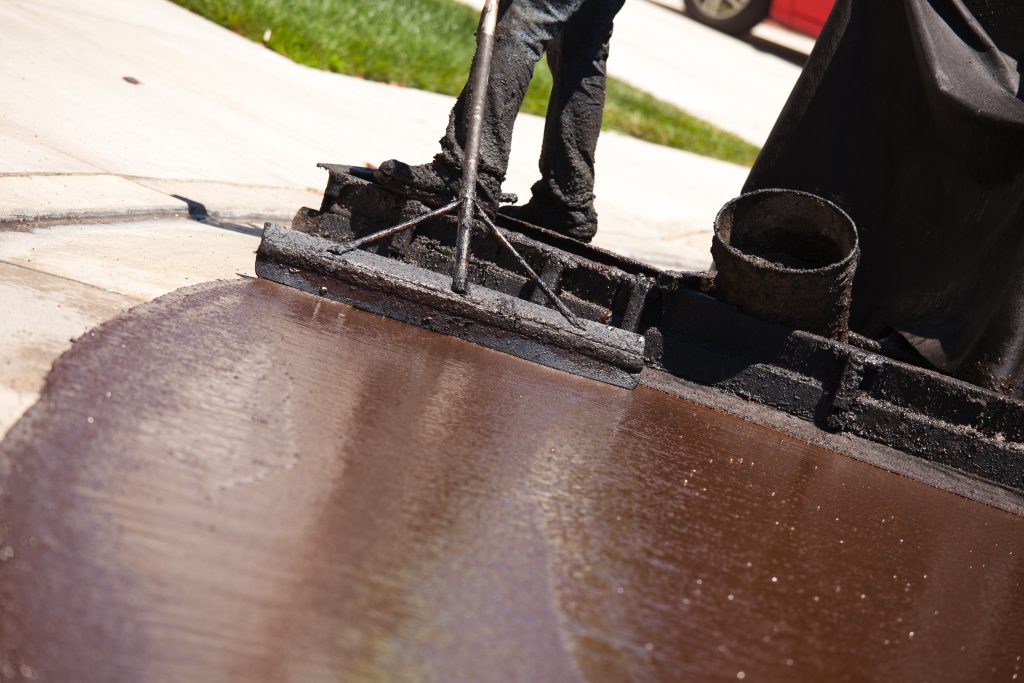Repairing concrete steps is a practical and cost-effective alternative to the full replacement of the staircase. Over time, steps can suffer from cracks, chips, and even structural damage due to weathering, usage, and settling. By addressing these issues promptly, property owners can extend the life of their concrete steps, ensuring safety and maintaining curb appeal.

The repair process involves several stages, including cleaning and prepping the damaged area, applying a suitable repair material, and finishing the surface for a uniform look. The key to a long-lasting repair lies in meticulous preparation and the use of quality materials. Properly repaired concrete steps not only improve the appearance of a home but also provide a safe and stable structure for everyday use.
Those tackling this repair project need a clear understanding of the right techniques and materials. It’s essential to choose a method and repair material compatible with the existing concrete to ensure a durable bond and prevent future damage. Thus, effective concrete step repair contributes to both the longevity of the steps and the safety of all users.
Assessing the Damage

Before addressing issues with concrete steps, one must thoroughly assess the condition to identify problem areas and determine the extent of the repairs needed. Attention to detail will ensure a successful restoration.
Identifying Problem Areas
When assessing concrete steps, one should look for common imperfections such as cracks, chips, and uneven surfaces. It’s important to evaluate the severity of these issues. Some defects may be superficial while others could indicate deeper structural problems. Inspection should begin by cleaning the steps to see the damage more clearly.
- Surface Irregularities: Look for cracks or chippings on the surface.
- Stability: Test steps for wobbliness or shifting that could signal foundational issues.
- Wear and Tear: Check for areas that have been worn down, posing a risk for slips or trips.
Determining the Necessary Repairs
Ascertaining the type of repair involves deciding whether a simple patch job will suffice or if a more extensive overhaul is required. One must consider the materials and tools what you need to proceed with the repair process once the imperfections have been identified.
- Small Imperfections: Minor cracks or chips may only need a quick patch with concrete filler or a resurfacing product.
- Major Damage: If damage is extensive, one might need to reconstruct sections of the step, which will require formwork, additional concrete, and possibly reinforcement.
For both minor and major repairs, one should gather the proper safety equipment, cleaning tools, and repair materials before commencing with the work to ensure the repairs are not only aesthetic but also long-lasting and safe.
Gathering Your Materials and Tools

Before beginning the concrete step repair process, it’s essential to have all necessary materials and tools on hand. Proper preparation ensures the repair work goes smoothly and results in a durable and visually pleasing finish.
Materials Needed for Repair
- Quick-Setting Concrete: For patching holes and shaping steps, Quikrete is a popular choice.
- Water: Needed to mix with concrete to achieve the desired consistency.
- Bonding Adhesive: Increases the adherence of new concrete to old surfaces.
Essential Tools for the Job
- Chisel: To remove damaged concrete efficiently.
- Hammer: Works in tandem with the chisel to chip away at broken sections.
- Wire Brush: Cleans the repair area to ensure a clean bonding surface.
- Bucket: Mixes concrete and keeps water nearby for adding to the mix or for clean-up.
- Masonry Brush: Applies the bonding adhesive evenly across the old concrete.
- Margin Trowel & Steel Trowel: These trowels are used for applying and shaping the concrete mix.
- Sponge: Helps to achieve a smooth finish and cleans any spills.
- Shovel: For transferring the concrete mix onto the steps.
- Shop Vac: Optional but effective for removing debris and dust from the work area.
- Concrete Edger: Shapes the edges of the steps giving a professional finish.
Preparation for Repairs

Before beginning any repair work, it’s crucial that one ensures the area is properly prepared. This not only entails cleaning the damaged sections thoroughly but also involves setting up a sturdy form in certain cases, which is essential for the new concrete to hold shape and cure correctly.
Cleaning the Damaged Area
First, one should remove loose particles, debris, and dirt from the damage site to create a clean, solid base for the repair material to adhere to. This typically requires sweeping and then scrubbing with a stiff, wet brush. If available, a pressure washer can significantly enhance the cleaning process. It’s important to apply a concrete bonding adhesive to the existing concrete to improve the bond between the old and new concrete.
Setting up Forms if Necessary
In instances where the structural integrity of a step is compromised, one might need to construct a form or mold to support and contain the new concrete as it sets. Use lumber cut to the specific dimensions of the step to create the form, ensuring it’s secure and level. Duct tape can be applied to the inner surface of the form to prevent the new concrete from sticking to the wood. The form should be held firmly in place with clamps or heavy objects, keeping it rigid while the concrete dries and cures.
Repairing the Steps

In concrete step repair, it’s crucial to use a high-quality patching compound for better adhesion and durability. Quick-setting cement is a common choice for the job due to its rapid curing time, which allows for faster completion of repairs.
Mixing the Patching Compound
To start the repair process, one must prepare the concrete patching compound by following manufacturer-specific guidelines. For example, this typically involves mixing a pre-measured amount of quick-setting cement with water until a consistent mixture is achieved. The mixture should be stiff yet workable, suitable to fill in the damaged areas without sagging.
Applying the Concrete Mixture
The application begins with dampening the pre-cleaned damage area to ensure proper adhesion. Using a pointed trowel, one should then apply the patching compound firmly, pressing it into all crevices and voids. It’s important to overfill the area slightly as the compound will shrink while it dries. For steps, maintaining the shape of the edges and corners is essential for a uniform look.
Finishing Touches
Once the patching compound is applied, one should level the patch to ensure it’s flush with the rest of the step surface. Using a resurfacer can help achieve a smooth finish on the top layer. To avoid a noticeable patch, one can blend the new material with the old by using a wood float or broom for texture. It’s critical to allow the patch to cure adequately before exposing it to foot traffic.
Final Steps and Curing
After the necessary repair materials are applied and shaped to match the existing concrete steps, attention to the curing process ensures the longevity and strength of the repair. Proper sealing and protection are critical to guard against weather and wear.
Sealing and Protecting the Steps
Once the concrete has been placed and finished, the application of a sealer plays a pivotal role in prolonging the life of the concrete stairs. The sealant should be applied as per the manufacturer’s instructions, typically after the concrete has sufficiently dried, which can vary based on temperature and humidity. Using an edger around the steps can also provide a clean, professional finish, whilst aiding in the prevention of future chipping at the edges. When selecting a sealer, one should consider a product that offers both waterproofing and protection from UV rays to maintain the appearance and integrity of the stairs over time.

 CALL US NOW
CALL US NOW



